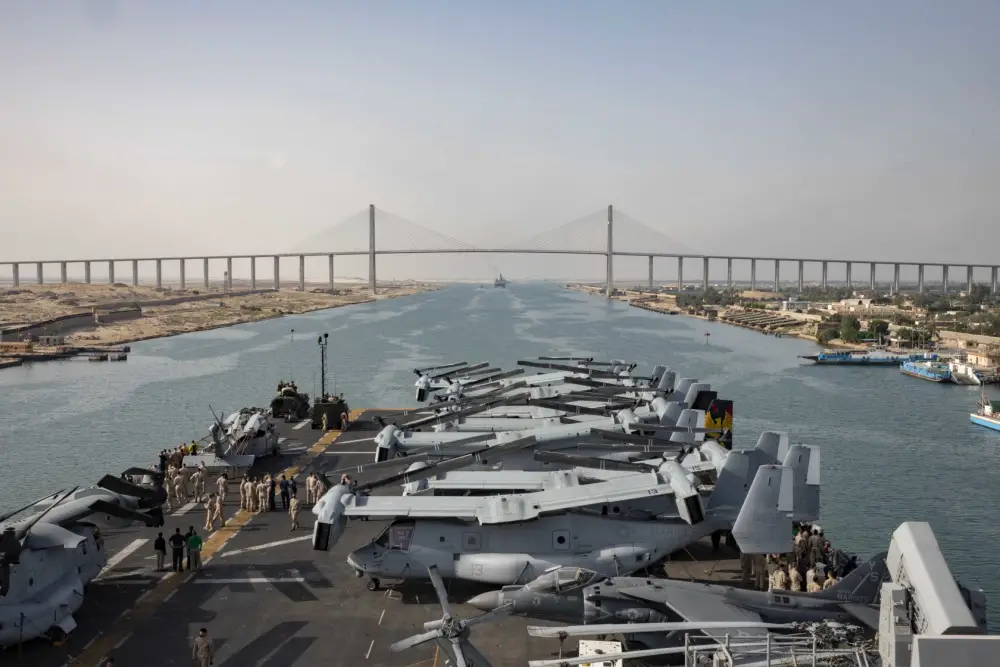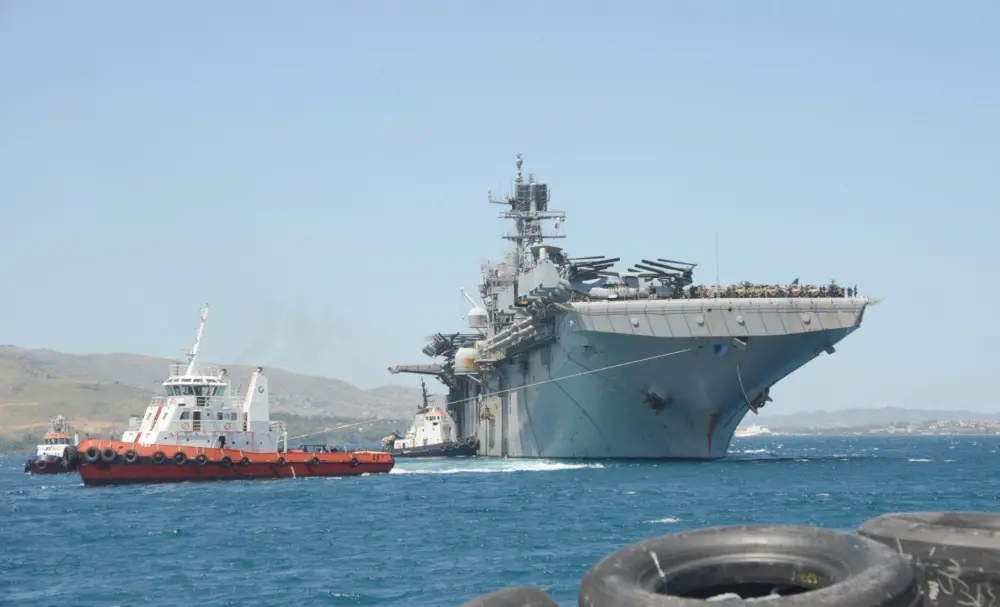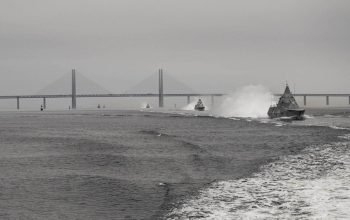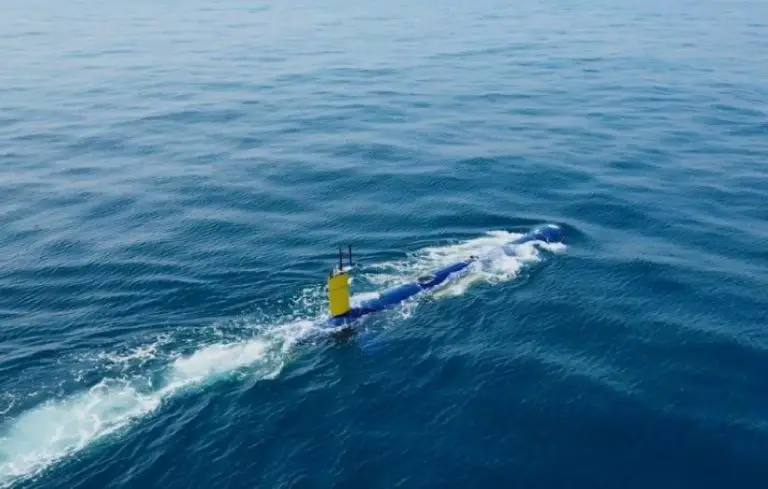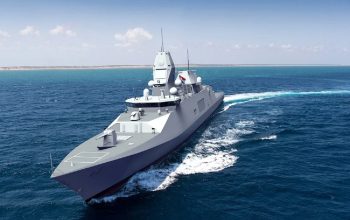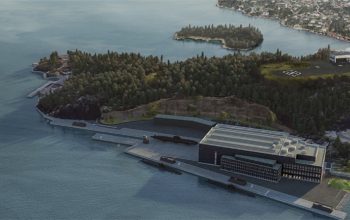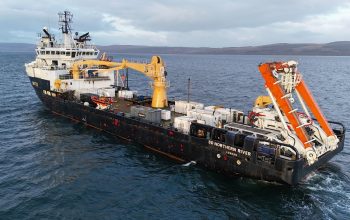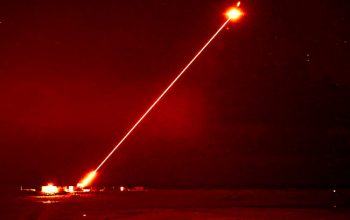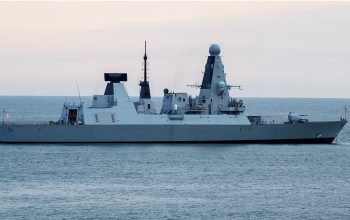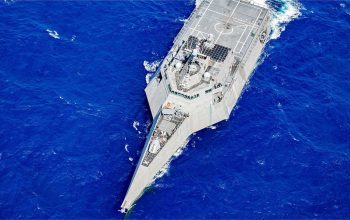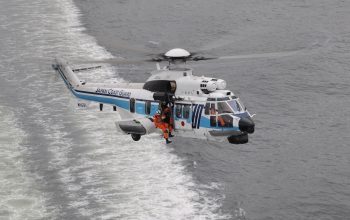The Iwo Jima Amphibious Ready Group (IWO ARG) and embarked 24th Marine Expeditionary Unit (MEU), conducted a routine southbound Suez Canal transit into the Red Sea, arriving in the 5th Fleet area of operations (AOO), June 1. While in the U.S. 5th Fleet area of operations, the IWO ARG and 24th MEU will operate and train alongside regional and coalition partners. Before entering the AOO, the more than 4,000 Sailors and Marines of the IWO ARG and 24th MEU participated in NATO exercises, hosted distinguished visitors, and conducted logistics and maintenance port visits in Greece, Portugal, Spain and the United Kingdom.
“The Marines and Sailors of the ARG/MEU team are a flexible, adaptable and persistent force,” said
Col. Eric D. Cloutier, commanding officer of the 24th MEU. “We look forward to working with our partners throughout the U.S. 5th Fleet area of operations and promoting a shared vision for maritime security.”
“The IWOARG looks forward to strengthening our partnerships in the region,” said Capt. Darren Nelson, commodore, Amphibious Squadron Four. “When we are ready together, we are better together.”
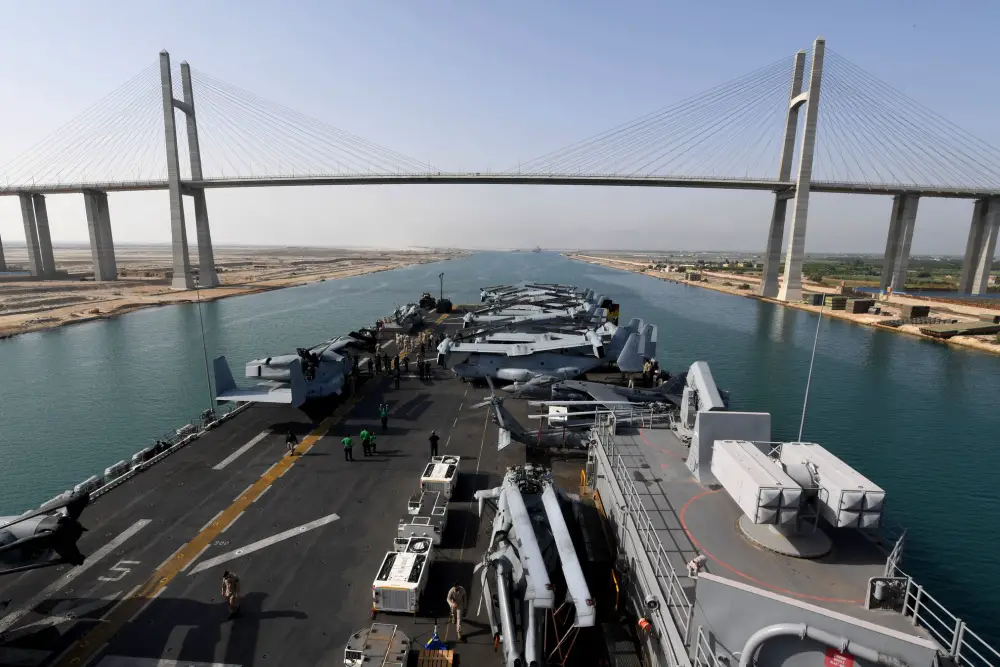
The IWO ARG consists of the amphibious assault ship USS Iwo Jima (LHD 7), dock landing ship USS Carter Hall (LSD 50), and amphibious transport dock ship USS San Antonio (LPD 17). Embarked detachments include Amphibious Squadron (PHIBRON) Four, Fleet Surgical Team (FST) Six, Helicopter Sea Combat Squadron (HSC) 26, Tactical Air Control Squadron (TACRON) 21, Naval Beach Group (NBG) Two, Beach Master Unit (BMU) Two, Assault Craft Units (ACU) Two and Four, and Sailors from Amphibious Construction Battalion (ACB) Two. As an inherently flexible maneuver force, capable of supporting routine and contingency operations, the ARG/MEU demonstrates the U.S. Navy’s commitment to regional partners and maritime security.
The 24th MEU mission is to provide the United States with a forward-deployed, amphibious force capable of executing missions across the full spectrum of operations and consists of four basic elements – a command element, a ground combat element, Battalion Landing Team (BLT) 1/8, a logistics combat element, Combat Logistics Battalion (CLB) 24 and an aviation combat element, Marine Medium Tiltrotor Squadron (VMM) 162 Reinforced. The 5th Fleet area of operations encompasses about 2.5 million square miles of water area and includes the Arabian Gulf, Gulf of Oman, Red Sea and parts of the Indian Ocean. The expanse is comprised of 20 countries and includes three chokepoints, critical to the free flow of global commerce.
